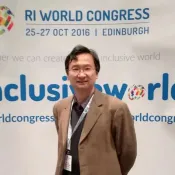Understanding Volunteer Work Measurement
About the discussion group
UNV has launched the preparation of the next edition of the State of the World’s Volunteerism Report 2025 (SWVR) which will be on the theme of measurement. There are issues of what to measure and how.
We would like to hear your views on this topic so that the research can benefit from your perspectives and understanding of volunteerism, explore diverse approaches to measuring volunteer impact and discover various methods and tools that can be used to measure the impact of volunteer contributions to the Sustainable Development Goals.

In reply to (No subject) by mohdosama_ahmad
Measurement challenges: The diversity of volunteering and the complexity of its impacts may make it difficult to find a uniform measurement standard. Different forms of volunteering, such as formal versus informal, online versus skills-based, may require different measurement methods, which may lead to a lack of uniform evaluation standards.
Balance between quantitative and qualitative indicators: While quantitative indicators provide measurable data, they may not fully capture the impact of volunteering, particularly in terms of variability and quality. Qualitative indicators, on the other hand, while providing insight into the impact of volunteering, may lack the necessary objectivity and comparability.
Economic indicators and measurement of social and environmental impacts: While it is important to extend measurement beyond economic indicators, it may be difficult in practice to quantify and assess social and environmental impacts, especially in the long term.
Diversity of cultural contexts: While recognizing the importance of cultural contexts is critical, differences in how volunteerism is assessed and measured across cultures may lead to inconsistencies and difficulties in interpreting results.
Utilization of technology and data analysis: While technology and data analysis can improve the efficiency and comprehensiveness of measurement, over-reliance on technology may overlook the human and emotional aspects of volunteering and may raise issues of data privacy and security.
Inclusiveness and diversity considerations: Ensuring inclusiveness and diversity in measurement methods is important, but in practice may face resource and methodological constraints, especially when considering marginalized groups and different cultural and socio-economic backgrounds.
Overall, measuring volunteering and its impact on SDGs is a complex and challenging task that requires balancing different measurement approaches, taking into account multicultural contexts and socio-economic factors, while making sound use of technology and data analysis tools. In the process, methodological constraints and practical difficulties may be encountered.

I (Chen Chen-Sing, Taiwan) believe that the effectiveness of volunteer work should be measured from the following aspects:
Social Creative Outcomes: Whether the volunteer work has produced new social creative outcomes, such as new social solutions, new educational concepts, and new services.
Social Impact: Whether the volunteer work has had a positive impact on society, such as ameliorating social problems and improving social well-being.
Personal Growth: Whether the volunteer work has contributed to the personal growth of the volunteers, e.g., improved their knowledge, skills, and abilities, etc.
Therefore, when measuring volunteer work, more emphasis should be placed on the indicators of creative outcomes, social impact and personal growth.
Specifically, it can be measured in the following ways:
Creative outcomes: The creative outcomes of volunteers' work can be understood through questionnaires, interviews, and displays of their work. For example, questionnaires can be used to measure volunteers' satisfaction with their work, interviews can be conducted to find out volunteers' experiences of their work, and the results of volunteers' work can be displayed.
Social Impact: Data analysis, questionnaire surveys, interviews, etc. can be used to understand the impact of volunteer work on society. For example, we can analyze the extent to which volunteer work helps the target groups, conduct questionnaire surveys on the impact of volunteer services on the recipients, and interview the recipients about their feelings about volunteer services.
Personal growth: We can analyze the personal growth of the volunteers through questionnaires, interviews, and observations. For example, questionnaires can be used to survey volunteers' feelings about their volunteer work, interviews can be used to evaluate their volunteer work, and the performance of volunteers in their volunteer work can be observed.
By measuring volunteer work from a creative perspective, the effectiveness of volunteer work can be more comprehensively reflected, thus better promoting the development of volunteer work.
The following are some specific indicators for measurement:
Creative Outcomes:
New solutions: e.g. volunteers propose new ways to solve social problems.
New Product: e.g. Volunteers developed a new product to help solve a social problem.
New Service: e.g., a volunteer develops a new service that helps improve the well-being of the community.
Social Impact:
Extent of help to target groups: e.g., how many target groups have been helped by the volunteer work and what problems have been solved.
Improvement of social well-being: e.g., what impact did the volunteer work have on the improvement of social well-being.
Personal growth:
Enhancement of knowledge: e.g., what new knowledge did the volunteer learn through the volunteer work.
Improvement in skills: e.g., new skills acquired through volunteer work.
Improvement in competence: For example, volunteers have improved their problem-solving and communication skills through volunteering.
These indicators can be adjusted according to different volunteer programs and target groups. When measuring volunteer work, appropriate indicators should be selected according to the actual situation, and in-depth thinking and the most stringent double-checking should be carried out to ensure the accuracy and reliability of the measurement results.

Autonomy: Volunteer work measurement should be something that volunteers themselves actively participate in, rather than passively accept. Volunteers should have the right to choose the services they want to engage in and to participate in the formulation, design, implementation and evaluation of service programs. Volunteers should also have the right to express their opinions and suggestions, and to receive appropriate feedback and recognition.
Interaction: Measurement of volunteer work should be an interactive process between volunteers and clients, volunteer service providers, authorities and other volunteers, rather than a unilateral judgment. Volunteers should develop good relationships with clients, understand their needs and expectations, and respect their rights. Volunteers should also maintain good communication and coordination with volunteer service providers, authorities and other volunteers, share experiences and resources, and learn from and support each other.
Diversity: Volunteer work should be measured in a multifaceted way, not in a single way. Volunteer work measurement should take into account different service programs, service targets, service methods, service hours, service locations, service environments, etc., and use different measurement methods, such as questionnaires, interviews, observations, journals, case studies, storytelling, etc., in order to obtain more comprehensive and objective information.
Openness: Volunteer measurement should be open, not closed. Volunteer measurement should be an ongoing process, not a one-time event. Volunteer measurement should be a process of reflection, not judgment. Volunteer measurement should be an innovative process, not a repetitive one. Volunteer work measurement should be about improving service quality and effectiveness, not about getting rewards or avoiding penalties.

Cultivate volunteers' creativity: Volunteer Work Measurement should be an opportunity to stimulate volunteers' creativity so that they can realize their potential in different situations and cooperate with others to solve problems. Volunteer Work Measurement should be an opportunity to encourage volunteers to try new ways of service delivery, identify new service needs, make new service suggestions, and create new service values.
Promote volunteers' whole-person development: Volunteer Work Measurement should be an opportunity to promote volunteers' whole-person development, so that volunteers can enhance their intellectual, emotional, physical, social, moral, and aesthetic qualities. Volunteer Work Measurement should be an opportunity for volunteers to learn new knowledge, skills, attitudes, and values. Volunteer work measurement should be an opportunity to enhance volunteers' self-confidence, self-esteem, self-discipline, and autonomy. Volunteer's perspective: Do volunteers feel that the methodology and purpose of the work measurement is autonomous, interactive, diversified and open? Do volunteers feel that the methodology and purpose of the work measurement can foster their creativity and promote their whole-person development? Do volunteers feel that the methods and objectives of work measurement reflect the reality of their service and service outcomes? Do volunteers feel that the methods and objectives of work measurement can help them improve the quality and effectiveness of their services?
Client's perspective: Do clients feel that the methods and objectives of the measurement are respectful, caring, collaborative, and innovative? Do clients feel that the methods and objectives of the measurement meet their service needs and expectations? Do clients feel that the methods and purposes of the work measurement enhance their quality of life and social well-being? Do clients feel that the methods and objectives of the work measurement can enhance their relationship and interaction with volunteers?

Self-Cognition Dynamics: A lot of research uncovers the pivotal role of self-cognition in shaping volunteer commitment. Volunteers with a heightened self-awareness not only exhibit stronger ties to the organization but also contribute to a more profound understanding of how individual cognitions impact the overall measurement of volunteer dedication.
Organizational Identification Influence: The findings underscore the substantial impact of organizational identification on volunteers' willingness to continue service. This dimension contributes crucial insights to the broader discourse on how organizational ties directly influence the measurement of volunteer commitment.
Self-Efficacy as a Mediator: The identification of self-efficacy as both an independent and mediating variable offers a nuanced perspective on the intricate mechanisms through which volunteers' perceptions influence their commitment. This discovery suggests actionable pathways for interventions that enhance volunteers' self-efficacy and, consequently, their intention to stay engaged, contributing a dynamic aspect to the measurement discourse.
Reassessing Social Network Dynamics: Contrary to conventional wisdom, some study challenges the presumed influence of social networks on volunteers' intentions to continue service. This critical finding prompts a reevaluation of the role of social relationships in the broader framework of volunteer measurement, introducing a novel perspective to the ongoing discourse.

In reply to (No subject) by chengmzhang
Measurement challenges: The diversity of volunteering and the complexity of its impacts may make it difficult to find a uniform measurement standard. Different forms of volunteering, such as formal versus informal, online versus skills-based, may require different measurement methods, which may lead to a lack of uniform evaluation standards.
Balance between quantitative and qualitative indicators: While quantitative indicators provide measurable data, they may not fully capture the impact of volunteering, particularly in terms of variability and quality. Qualitative indicators, on the other hand, while providing insight into the impact of volunteering, may lack the necessary objectivity and comparability.
Economic indicators and measurement of social and environmental impacts: While it is important to extend measurement beyond economic indicators, it may be difficult in practice to quantify and assess social and environmental impacts, especially in the long term.
Diversity of cultural contexts: While recognizing the importance of cultural contexts is critical, differences in how volunteerism is assessed and measured across cultures may lead to inconsistencies and difficulties in interpreting results.
Utilization of technology and data analysis: While technology and data analysis can improve the efficiency and comprehensiveness of measurement, over-reliance on technology may overlook the human and emotional aspects of volunteering and may raise issues of data privacy and security.
Inclusiveness and diversity considerations: Ensuring inclusiveness and diversity in measurement methods is important, but in practice may face resource and methodological constraints, especially when considering marginalized groups and different cultural and socio-economic backgrounds.
Overall, measuring volunteering and its impact on SDGs is a complex and challenging task that requires balancing different measurement approaches, taking into account multicultural contexts and socio-economic factors, while making sound use of technology and data analysis tools. In the process, methodological constraints and practical difficulties may be encountered.


In reply to (No subject) by Kamuruko

In reply to (No subject) by MWaituru

In line with our commitment to understanding the landscape of Time Banking in China, our research group conducted five extensive nationwide surveys. We delved into the growth and transformations of over a hundred Time Banking organizations in China. The evolution of these entities not only mirrors the changes within the sector but also reflects the increasing public acceptance of volunteer service models grounded in time metrics.
As we navigate the ever-changing landscape influenced by technological advancements and shifting demands, the dynamics of volunteer services have evolved. Tasks that once demanded significant time investments can now be streamlined with technological support, while others still require substantial commitments.In the measurement of volunteerism, it's crucial to adapt to these changes dynamically. We must also distinguish between foundational and optional volunteer services, necessitating a diverse set of metrics to accurately capture the contributions of various volunteer endeavors.

Self-Cognition Dynamics: A lot of research uncovers the pivotal role of self-cognition in shaping volunteer commitment. Volunteers with a heightened self-awareness not only exhibit stronger ties to the organization but also contribute to a more profound understanding of how individual cognitions impact the overall measurement of volunteer dedication.
Organizational Identification Influence: The findings underscore the substantial impact of organizational identification on volunteers' willingness to continue service. This dimension contributes crucial insights to the broader discourse on how organizational ties directly influence the measurement of volunteer commitment.
Self-Efficacy as a Mediator: The identification of self-efficacy as both an independent and mediating variable offers a nuanced perspective on the intricate mechanisms through which volunteers' perceptions influence their commitment. This discovery suggests actionable pathways for interventions that enhance volunteers' self-efficacy and, consequently, their intention to stay engaged, contributing a dynamic aspect to the measurement discourse.
Reassessing Social Network Dynamics: Contrary to conventional wisdom, some study challenges the presumed influence of social networks on volunteers' intentions to continue service. This critical finding prompts a reevaluation of the role of social relationships in the broader framework of volunteer measurement, introducing a novel perspective to the ongoing discourse.
Aminu Abubakar from Taraba State Nigeria
+2348160721155

I am also honored to join the dialogue and the upcoming work on the 2025 Report. For the last two days I have spent all my free time studying all the posts in the two discussions and I find many interesting ideas and suggestions in them. Already soon I will prepare my opinion, suggestions and my thoughts on many volunteer work measurement issues.
All the best to everyone!


Expansion of national datasets on non-counted groups
This proposal is about expanding national datasets on non-counted groups (non-volunteers) in labor force surveys.
In the household-based labor force survey, in the module on volunteer work, a significant proportion of respondents answer that they are neither involved in volunteer nor donor activities and do not provide unpaid assistance. Further interview for such respondents ends here. In other words, such respondents remain unnoticed by the researchers.
It seems to me that it is necessary to further analyze this group, i.e. those who do not participate in volunteer activities, but perhaps among them there are those who under certain conditions are ready to become volunteers. Analyzing this group can be a very important source of data for creating methods and tools to attract new people to volunteering.
Suggestions: Analyze nonvolunteers in a manner similar to the methodology for surveying and analyzing underutilized labor force. These groups collectively can be referred to as the underutilized component of volunteerism.
How: This can be done by using the additional module of the labor force survey on volunteering proposed by ILO/UNV. For this purpose, it is suggested that this module be supplemented by another small questionnaire to be completed by non-volunteer respondents. In this case, the expansion of the National Indicator Sets can be a very useful source of data to identify the potential resource of volunteerism. Based on the data obtained, it is possible to form a strategy and recommendations on creating conditions for participation in volunteer activities, stimulating new participants in volunteer activities, thereby increasing the number of volunteers in communities and developing the potential of volunteerism at the strategic level.
Discussion Moderators


Discussion Members









How to join
Share your ideas and experiences! To join the discussions, simply:
- Create a user account here
- Once your account has been activated, log in here (please make sure to check your spam).
- Then go this discussion forum
- Select the second tab, 'Discussion' to leave a comment and engage with other participants.
- For any technical issues, contact us here

Recognize the diverse forms of volunteerism, including formal and informal volunteering, online volunteering, skills-based volunteering, and corporate volunteering. Each form may have unique impacts and require different measurement approaches.
Acknowledge the importance of both quantitative and qualitative metrics. While quantitative data can provide numerical insights into the scale of volunteer contributions, qualitative data can capture the nuanced and transformative aspects of volunteer experiences and impacts.
Extend measurement beyond economic indicators to include social and environmental impacts. Volunteer contributions often extend beyond direct economic measures and can positively influence social cohesion, environmental sustainability, and community resilience.
Consider measuring the long-term effects of volunteerism on capacity building and empowerment. Volunteers often contribute not only to immediate project outcomes but also to the development of local skills, leadership, and community resilience.
Explore metrics that assess the effectiveness of partnerships and collaboration between volunteers, NGOs, governments, and other stakeholders. Volunteer efforts are often most impactful when integrated into broader development strategies.
Leverage technology and data analytics for more efficient and comprehensive measurement. Digital platforms and data analytics can facilitate the collection and analysis of data on volunteer activities, making it easier to assess impact at scale.
Consider the value of longitudinal studies to understand the sustained impact of volunteer efforts over time. This approach allows for the tracking of changes in communities and the identification of trends in volunteer contributions. Recognize the importance of cultural context in measuring volunteer impact. Different communities may value and measure volunteerism in distinct ways, and it's essential to respect and incorporate these cultural nuances into measurement frameworks.
Ensure that measurement approaches are inclusive and consider the diversity of volunteers. This includes accounting for the contributions of marginalized groups and understanding how different cultural, socioeconomic, and demographic factors may influence the impact of volunteerism.